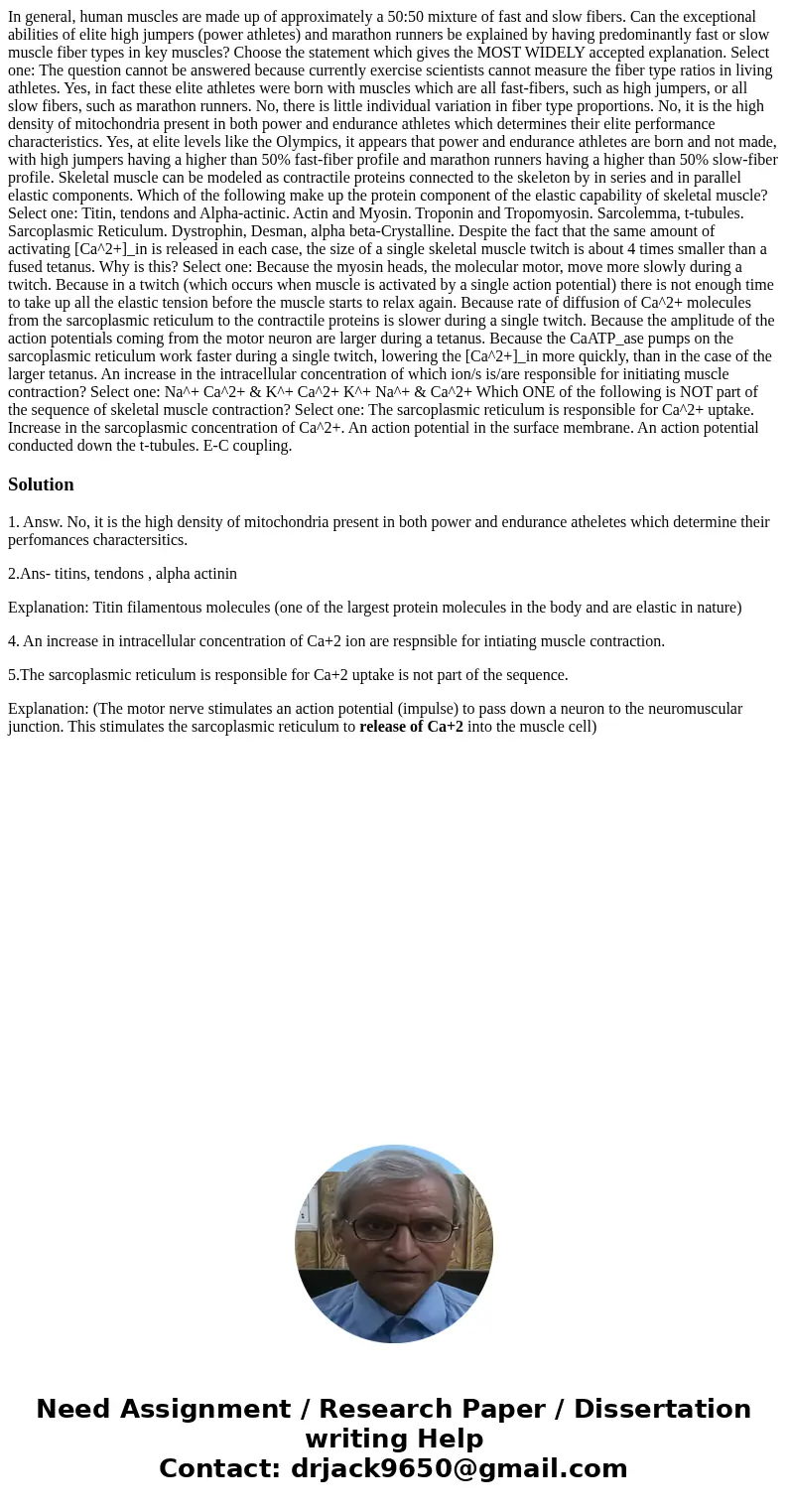In general human muscles are made up of approximately a 5050
In general, human muscles are made up of approximately a 50:50 mixture of fast and slow fibers. Can the exceptional abilities of elite high jumpers (power athletes) and marathon runners be explained by having predominantly fast or slow muscle fiber types in key muscles? Choose the statement which gives the MOST WIDELY accepted explanation. Select one: The question cannot be answered because currently exercise scientists cannot measure the fiber type ratios in living athletes. Yes, in fact these elite athletes were born with muscles which are all fast-fibers, such as high jumpers, or all slow fibers, such as marathon runners. No, there is little individual variation in fiber type proportions. No, it is the high density of mitochondria present in both power and endurance athletes which determines their elite performance characteristics. Yes, at elite levels like the Olympics, it appears that power and endurance athletes are born and not made, with high jumpers having a higher than 50% fast-fiber profile and marathon runners having a higher than 50% slow-fiber profile. Skeletal muscle can be modeled as contractile proteins connected to the skeleton by in series and in parallel elastic components. Which of the following make up the protein component of the elastic capability of skeletal muscle? Select one: Titin, tendons and Alpha-actinic. Actin and Myosin. Troponin and Tropomyosin. Sarcolemma, t-tubules. Sarcoplasmic Reticulum. Dystrophin, Desman, alpha beta-Crystalline. Despite the fact that the same amount of activating [Ca^2+]_in is released in each case, the size of a single skeletal muscle twitch is about 4 times smaller than a fused tetanus. Why is this? Select one: Because the myosin heads, the molecular motor, move more slowly during a twitch. Because in a twitch (which occurs when muscle is activated by a single action potential) there is not enough time to take up all the elastic tension before the muscle starts to relax again. Because rate of diffusion of Ca^2+ molecules from the sarcoplasmic reticulum to the contractile proteins is slower during a single twitch. Because the amplitude of the action potentials coming from the motor neuron are larger during a tetanus. Because the CaATP_ase pumps on the sarcoplasmic reticulum work faster during a single twitch, lowering the [Ca^2+]_in more quickly, than in the case of the larger tetanus. An increase in the intracellular concentration of which ion/s is/are responsible for initiating muscle contraction? Select one: Na^+ Ca^2+ & K^+ Ca^2+ K^+ Na^+ & Ca^2+ Which ONE of the following is NOT part of the sequence of skeletal muscle contraction? Select one: The sarcoplasmic reticulum is responsible for Ca^2+ uptake. Increase in the sarcoplasmic concentration of Ca^2+. An action potential in the surface membrane. An action potential conducted down the t-tubules. E-C coupling.
Solution
1. Answ. No, it is the high density of mitochondria present in both power and endurance atheletes which determine their perfomances charactersitics.
2.Ans- titins, tendons , alpha actinin
Explanation: Titin filamentous molecules (one of the largest protein molecules in the body and are elastic in nature)
4. An increase in intracellular concentration of Ca+2 ion are respnsible for intiating muscle contraction.
5.The sarcoplasmic reticulum is responsible for Ca+2 uptake is not part of the sequence.
Explanation: (The motor nerve stimulates an action potential (impulse) to pass down a neuron to the neuromuscular junction. This stimulates the sarcoplasmic reticulum to release of Ca+2 into the muscle cell)

 Homework Sourse
Homework Sourse